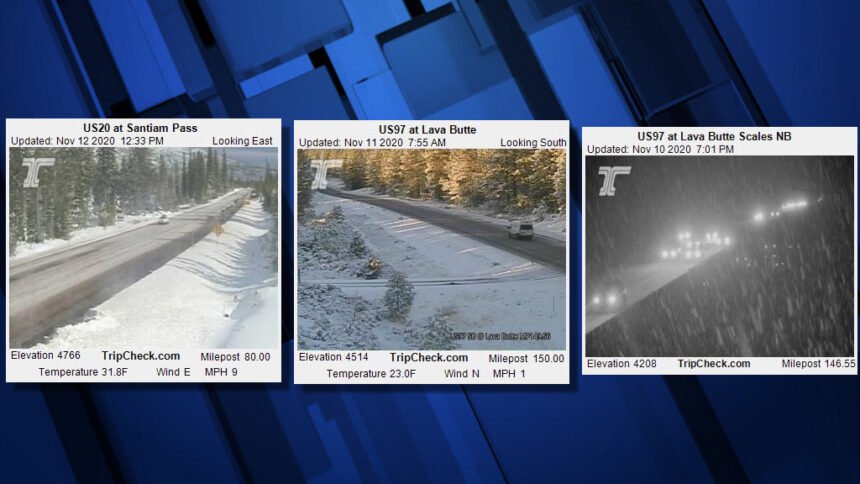As winter storm approaches, ODOT’s advice: ‘Think twice’ before traveling over passes

'Safest to stay off the road': If you do travel, use plenty of caution, follow common-sense rules
BEND - Snow, cold, wind and ice may conspire in the days ahead to create potentially hazardous traveling conditions throughout Central Oregon, and ODOT's advice Thursday included: Stay home and off the roads, if you can -- especially the slick, snowy mountain passes.
Here's the ODOT Region 4 news release, in full:
Snow in the Cascades and a mix of snow and rain in Central Oregon is possible over the next few days.
Rain, possibly heavy at times, is expected to affect the recently burned areas adjacent to OR22 and OR126.
ODOT has prepositioned equipment to handle the potential effects of the approaching weather system. Crews are on 24/7 alert.
ODOT asks travelers to think twice before trying to drive over the mountain passes, which are expected to get several inches of snow.
If you do drive, use plenty of caution and observe a few common sense rules for navigating hazardous weather conditions:
- Get safely situated. Don’t wait until after a storm hits to get on the road. Get to your destination before conditions turn nasty and unsafe.
- Travel smart. Consider waiting until a storm passes to get on your bike or in your car. Look out for each other. If you must drive, remember cyclists and pedestrians are harder to see in a storm. If you’re biking or walking remember that cars don’t stop quickly on snow and ice.
- Leave early. It’s smart to allow plenty of time to get where you’re going. In severe weather, closures and crashes can cause long delays.
- Check on any appointments you have before you leave. Offices and businesses may close due to the weather.
- Know before you go. Plan your route. Visit Tripcheck.com in advance to look at ODOT cameras and check conditions.
- Don’t abandon your vehicle. It prevents us from clearing the road and emergency services from getting to the people who need them.
- Carrying an emergency kit that includes supplies of water and food, and blankets. Have a full tank of gas and charge your phone.
- Beware of outages. If a storm knocks out power to traffic signals, treat intersections like an all-way stop. The driver who stops first goes first.
- Watch for plows. ODOT sand trucks, plows and deicer trucks can’t clear roads clogged with traffic. The more traffic stays off the road, the quicker roads can be treated. Stay at least three car lengths back. Everybody benefits the sooner ODOT can get the road cleared.
In severe weather, ODOT deploys all available tools in its winter arsenal, including plows, sanders, and deicers as appropriate. Crews and equipment have been prepositioned to respond.
As necessary, ODOT crews will be working 12-hour shifts around the clock. If conditions allow, crews will pre-treat roads with de-icer -- magnesium chloride with rust inhibitor – on area roads, with plows and sanding trucks on standby for use as needed.
Mountain passes are receiving heavy amounts of snow, and travelers over higher elevations should be prepared for extreme winter driving conditions by carrying chains and knowing how to use them.
"Remember, driving on ice and snowpack is never a safe choice. The safest thing to do is stay off the road," ODOT says.